What to Look for when Buying NFTs on Binance NFT?
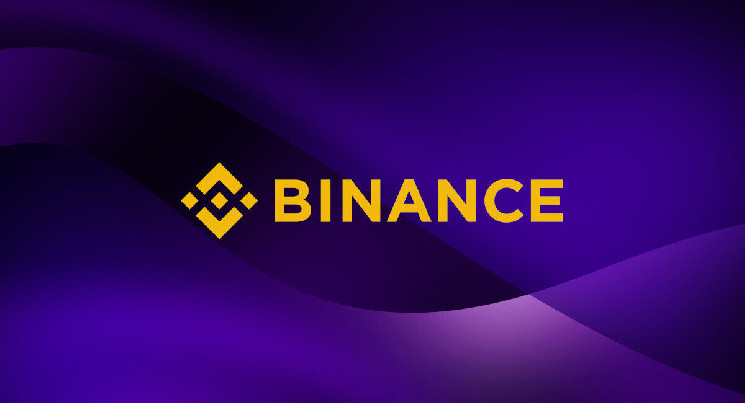
Non-fungible tokens, or NFTs for short, have turned out to be one of the most interesting innovations enabled by blockchain technology. While the potential applications of NFTs are almost limitless, the tech has quickly found a product-market fit for digital artworks and collectibles.
Even though the poor performance of the crypto market in 2022 has also slowed down interest for NFTs, the market has shown an impressive level of resilience—for now, it certainly looks like NFTs are here to stay and weren’t just a phenomenon of the 2020-2021 cryptocurrency bull market.
NFTs first started gaining traction on the Ethereum blockchain, which is where the technology originated – projects like CryptoPunks and CryptoKitties were some of the first examples of using NFTs to represent unique digital collectibles. The OpenSea marketplace emerged as a clear leader in the NFT marketplace sector, but the number of competitors is growing quickly. For example, many established cryptocurrency exchanges have implemented NFT trading into their product offerings.
Binance NFT is a fully-featured NFT marketplace created by Binance
One of the most prominent examples of this is Binance NFT, which is an NFT marketplace launched by the Binance cryptocurrency exchange in 2022. Binance NFT currently supports NFTs issued on the Ethereum and BNB Chain blockchain platforms.
Explore NFTs on Binance
In this article, we’ll be taking a look at how you can use Binance NFT to explore and purchase NFTs. The platform has implemented numerous features since its launch that make it easy to find NFTs that are relevant to you and filter out the “noise” you’re not interested in.
Interested in Binance NFT? here’s what you need to know
Let’s explain some of the most important concepts associated with NFT collections that you can find on Binance NFT. This will help you get a better perspective on the NFTs and collections you’re evaluating, and how they stack up against the market. We’ll be using the Rh!noX NFT collection as an an example to make the explanation clearer—please note that this is not an endorsement or investment advice.
Floor price
The concept of a “floor price” is used very commonly in the NFT community. The floor price of an NFT collection simply tells you the lowest price an NFT from the collection can currently be purchased for. We can see that the current floor price of the Rh!noX collection on the Binance NFT marketplace is 849 USD. When it comes to algorithmically generated collections like Rh!noX, you’ll typically find that NFTs with more common traits tend to have a lower price. NFTs with rarer traits tend to be farther removed from the collection’s floor price.
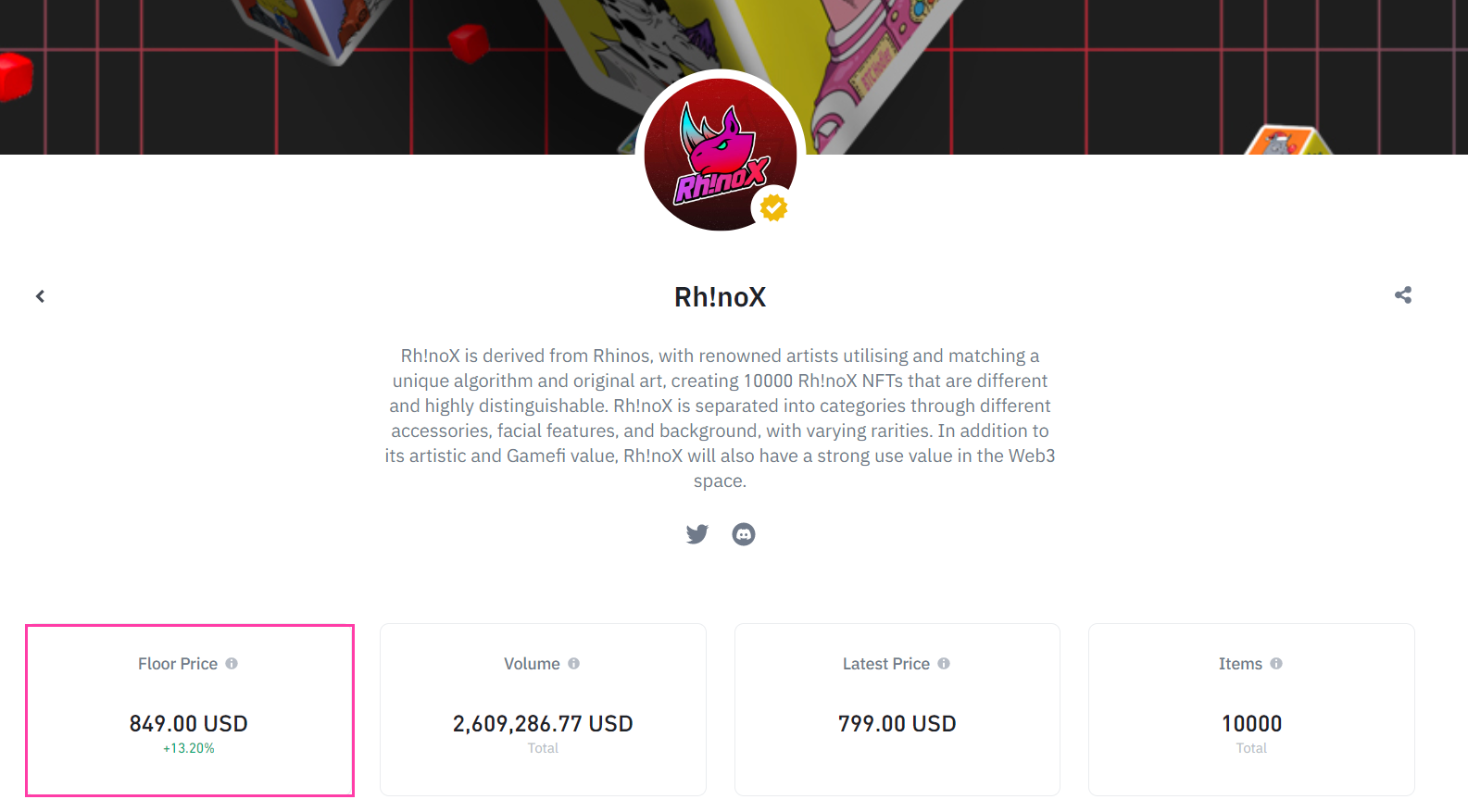
Ceiling price
As the name suggests, the ceiling price is the opposite of the floor price. The ceiling price refers to the highest price an NFT from a collection is currently being sold for. The ceiling price is usually less useful as a metric than the floor price, as NFT owners will sometimes list their NFTs for sale at unrealistically high prices.
Estimated market cap
Unlike with standard crypto assets like Bitcoin and Ethereum, it’s not really possible to provide an accurate market cap figure for an NFT collection. This is because different NFTs from a collection have different prices (which also depend on the specific owner), and not all NFTs from a collection are on sale at any given moment.
However, we can calculate an estimate of an NFT’s collection’s market cap, which can help us gauge how valuable it is compared to other NFT collections. You can get an estimate by multiplying the collection’s 7-day average trading price with the total number of NFTs in the collection.
Supply
The supply of a NFT collection is the total number of NFTs that are part of that collection. In the case of the Rh!noX collection, the supply is 1337 NFTs. When considering a collection’s floor price, it’s also worth taking into account the number of NFTs in the collection—the concept is similar to evaluating a cryptocurrency based on the price of a single unit and the size of the total supply. On Binance NFT, you can see a collection’s supply in the “Items” section.
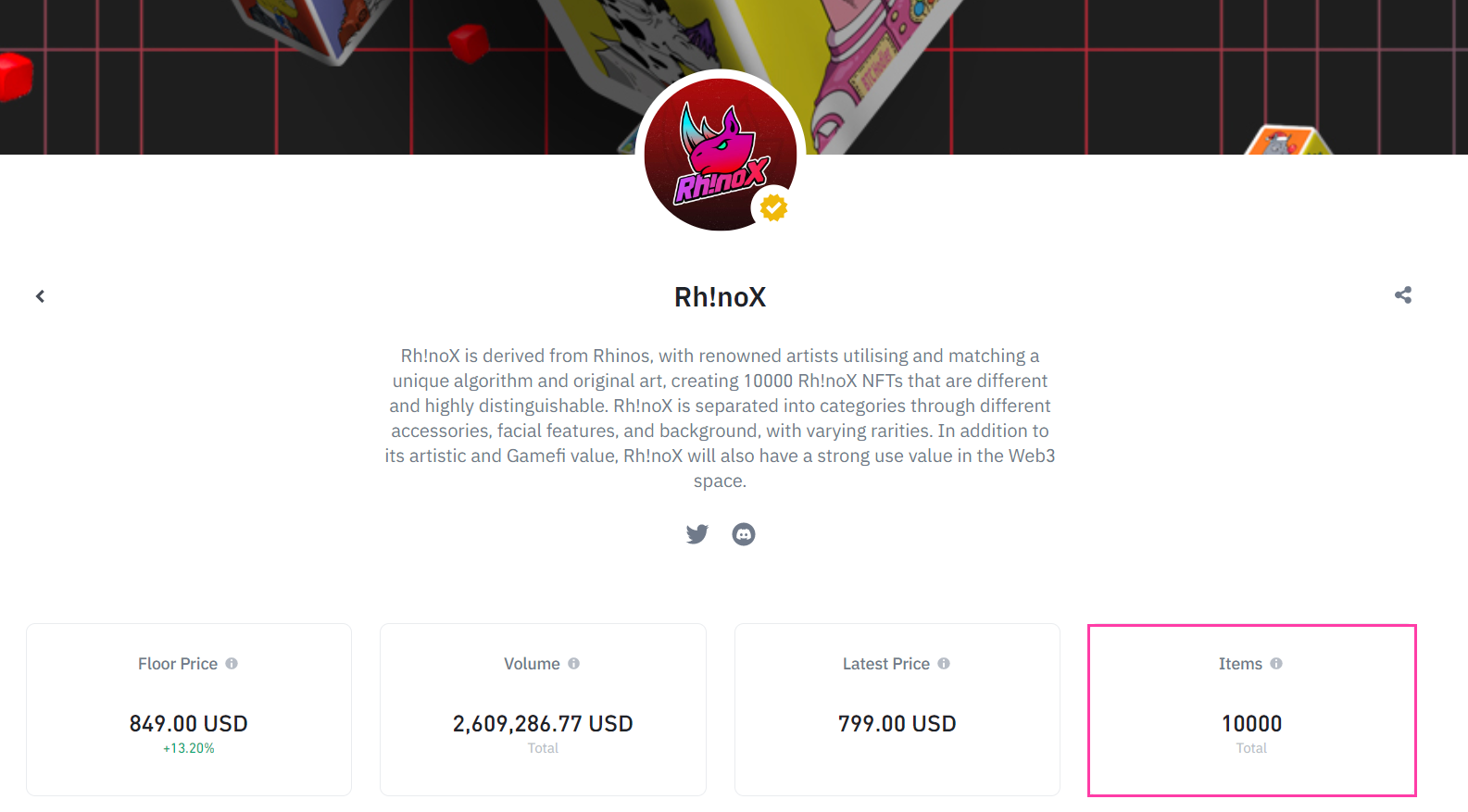
Rarity
When it comes to PFP (profile picture) NFTs like Rh!noX, every NFT in the collection is typically unique—no two NFTs in the collection are identical. Therefore, the concept of “rarity” can be a bit confusing at first glance. Usually, when NFT collectors talk about rarity, they talk about the rarity of the traits displayed on a particular NFT.
Some traits are rarer than others, which means that they appear on fewer NFTs in the collection. NFTs with rare traits will often fetch a higher price than NFTs with more common traits, but this is not always the case.
For NFT collections that support this feature, you can filter NFTs from the collection based on their traits. You can do so in the “Properties” section under “Filters”. In our example, we’re filtering for Rh!noX NFTs that have the “Universe” fur trait.
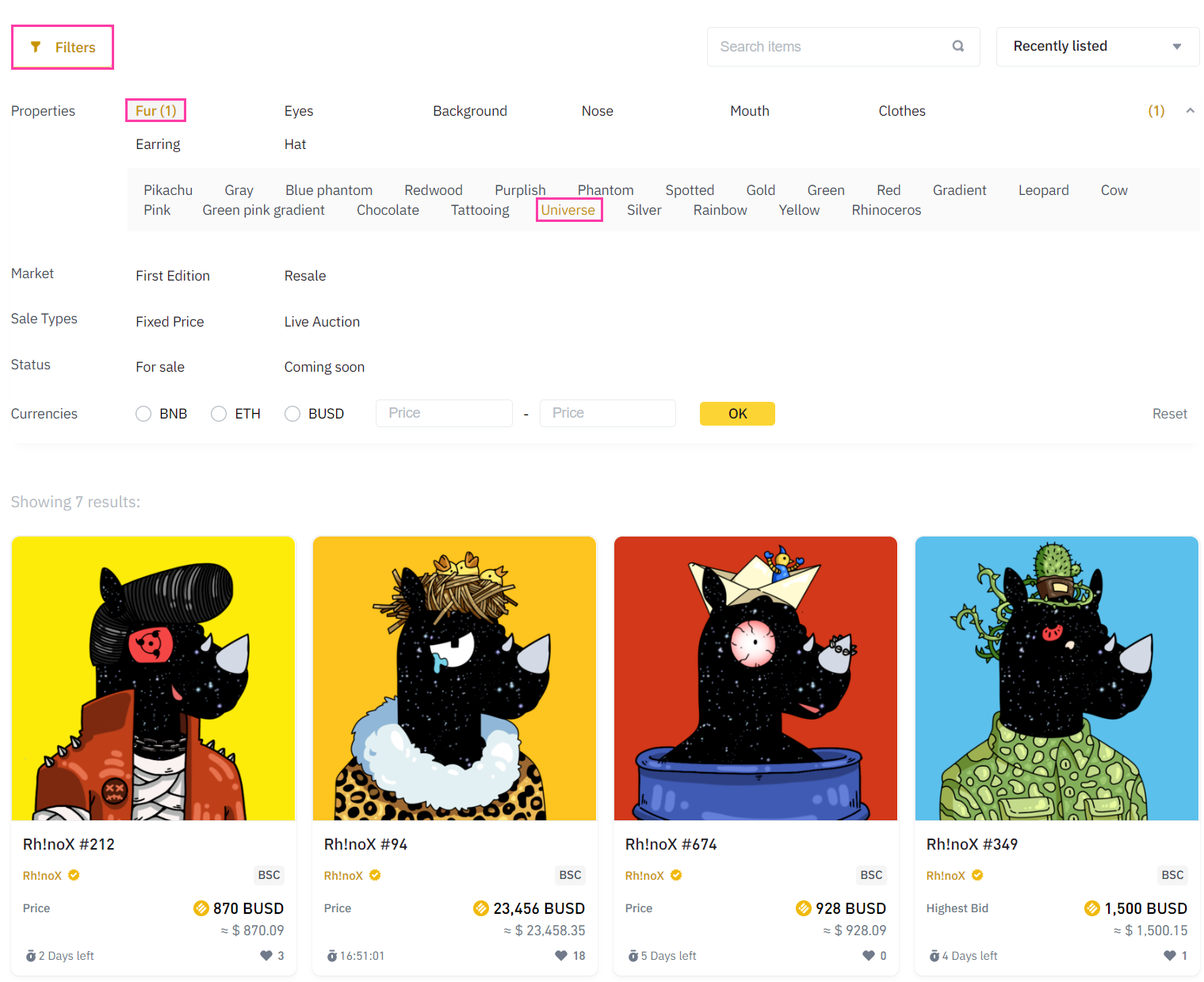
You can also apply multiple trait filters at a time, but you might end up with no results—an NFT with the specific combination of traits you’re looking for might not exist.
Trading volume
The trading volume metric tells you the volume of sales for an NFT collection in a given time period. If a collection has a lot of trading volume, that indicates that there is a substantial amount of interest for the project. You can view the trading volume rankings of different projects on Binance NFT in the marketplace’s “Ranking” section.
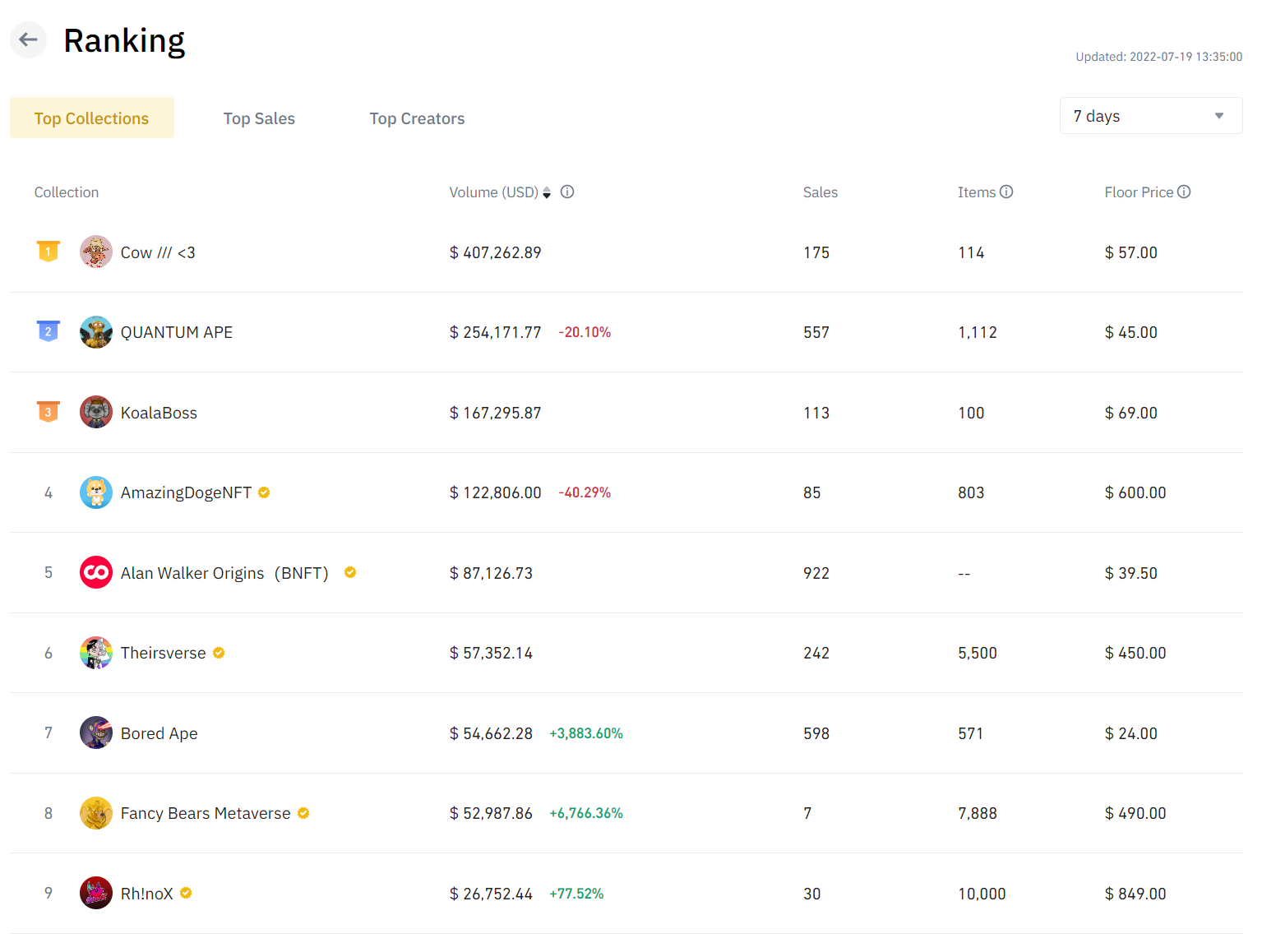
Buying NFTs on Binance NFT
If you want to buy an NFT on Binance NFT, there’s a couple of different ways to go about it. If you already know the collection you’re interested in, you can simply find it using the search bar and then browse the NFTs using the filter system.
NFTs that are already listed with a fixed price can be purchased immediately at the listed price. Sometimes, NFTs aren’t listed with a fixed price, but are instead put on auction. Here’s an example of a Rh!noX NFT that’s on auction with the current highest bid of 1,500 BUSD. If you wanted to purchase this particular NFT, you’d have to submit a higher bid and hope that nobody would outbid you before the end of the auction.
If you’re looking for a more detailed guide on the process of buying NFTs on Binance NFT, you can find one on Binance’s official website.
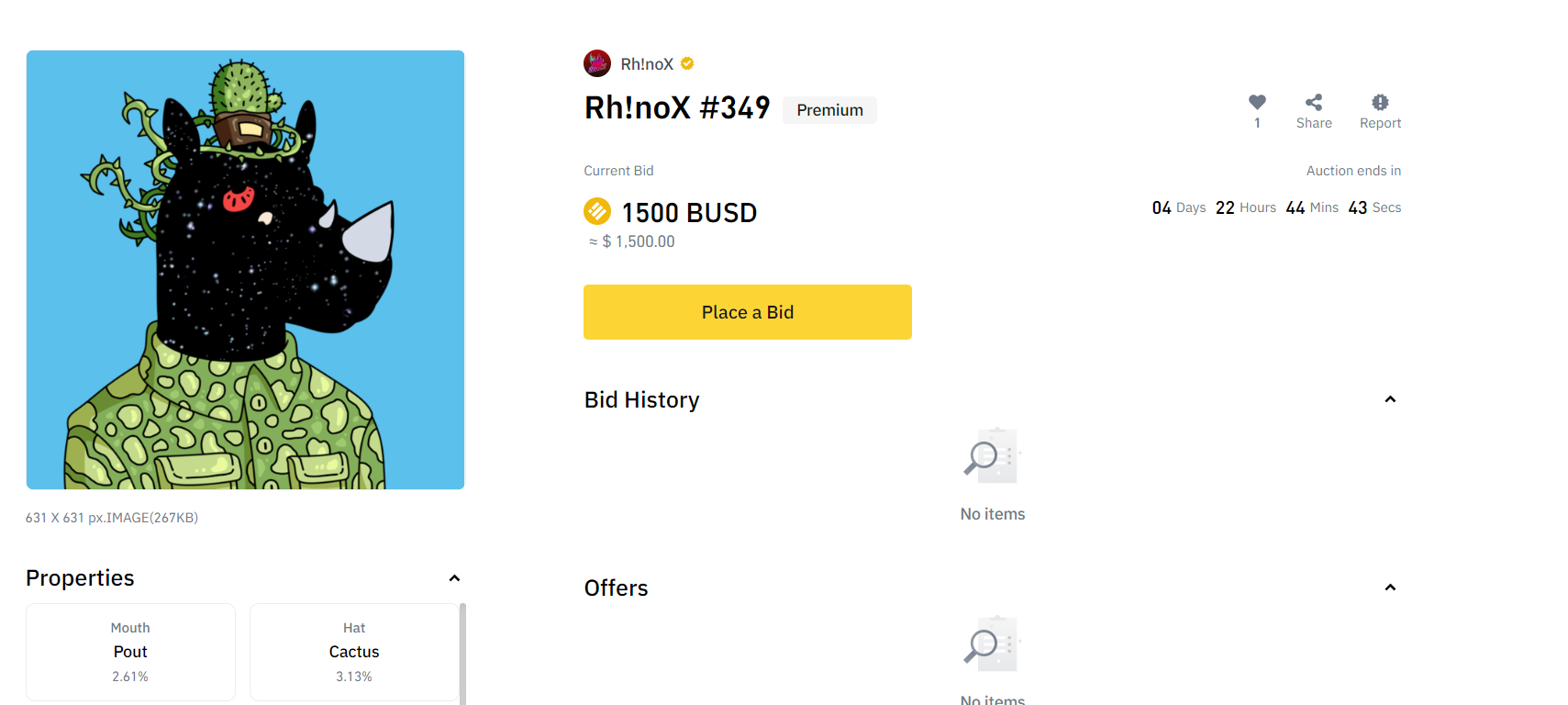
Collections listed on Binance NFT are divided into two groups—Premier and Standard. Premier collections are created in collaboration with the Binance NFT platform, and you can easily identify them by the orange tick next to their name. Meanwhile, Standard collections haven’t been verified by Binance NFT. If you’re just getting started with NFTs and don’t have much experience with the market, it might be a good idea to narrow down your search to Premier collections only.
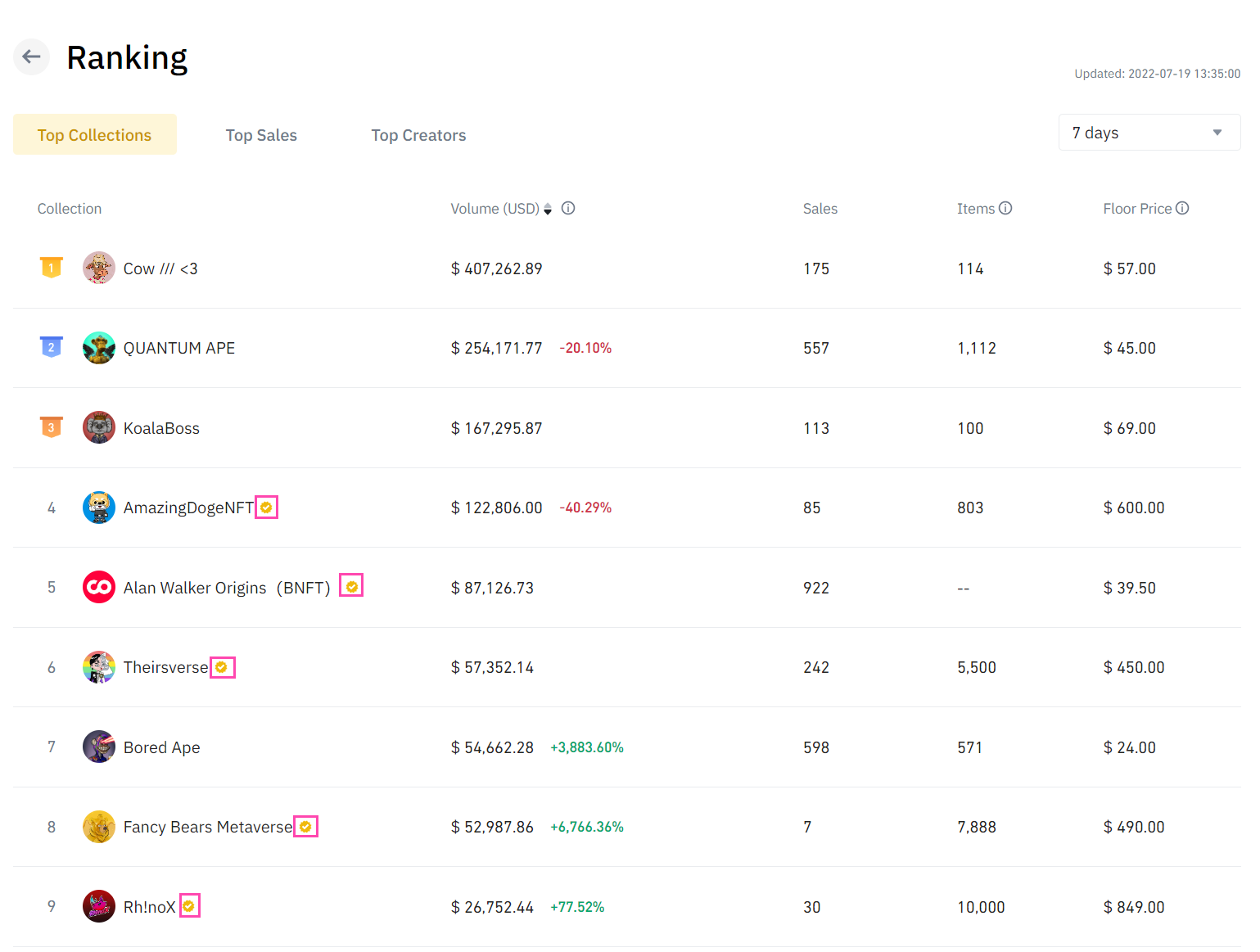
You can also quickly scan projects based on their trading volume, floor price, supply, and number of sales. This is useful to identify active projects that are currently enjoying a lot of interest from NFT collectors and traders.
If you go to the NFT Rankings section of the Marketplace, you can easily find NFT collections with the most sales, as well as the NFT creators whose NFTs are seeing the most trading volume.
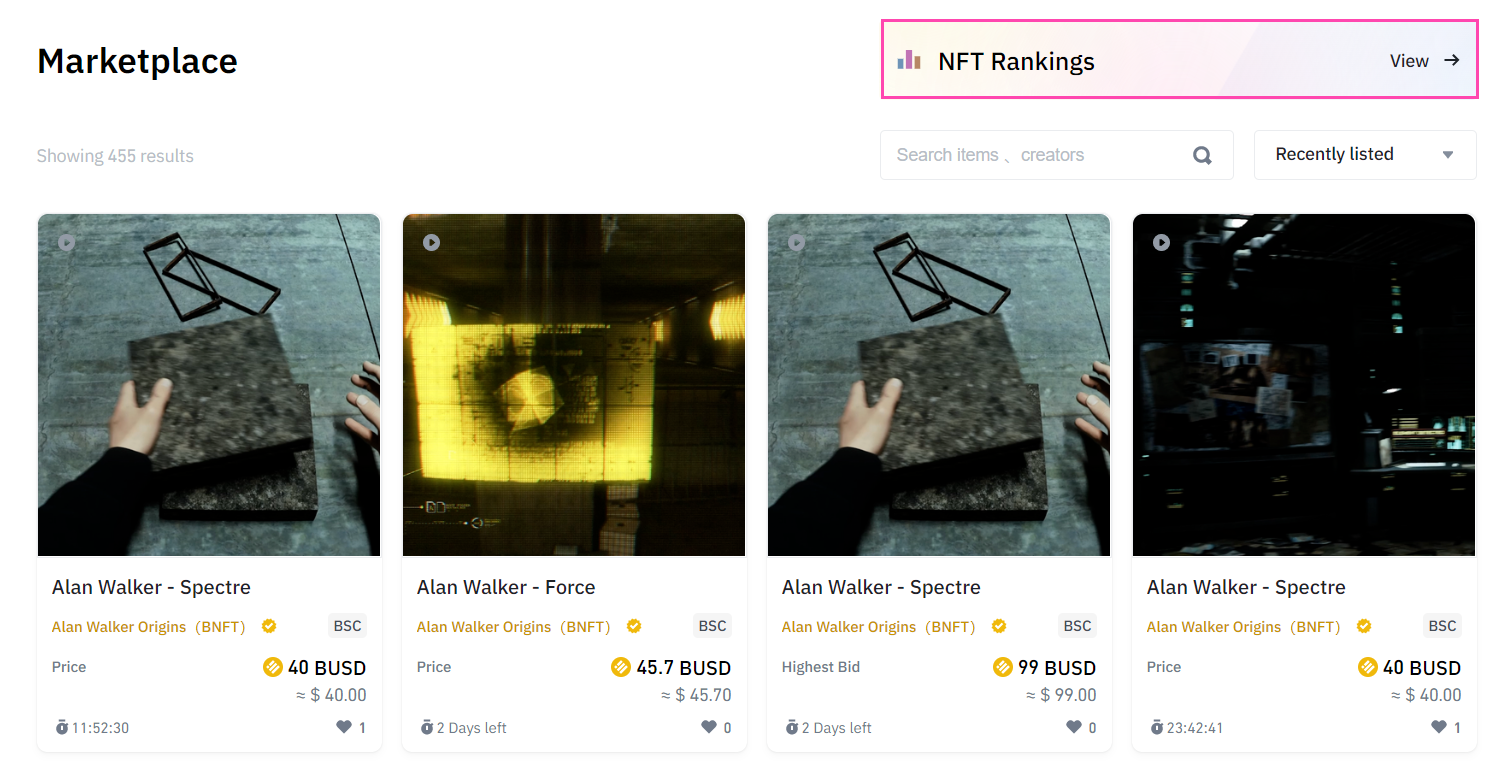
If you just want to collect NFTs and keep them without any intentions of selling them later, metrics like trading volume and sales might not be important to you. However, if you plan to sell your NFT at a later date, it’s a good idea to stick to projects that have strong trading volume and sales activity—otherwise, it might be difficult to find someone that’s willing to buy your NFT from you. Since all NFTs are different, the liquidity in the NFT markets is much lower than the liquidity in the markets for coins like BTC, ETH and BNB.
The bottom line
Binance NFT is a fully-featured NFT marketplace that gives you plenty of tools to find the NFT projects you’re interested in. The platform supports a multitude of filtering and search options, which makes it easy to filter among the NFTs within a single collection, or compare different NFT collections with each other. Another useful feature are “Premier” collections, which are verified by Binance NFT.



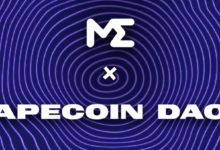


 Bitcoin
Bitcoin  Ethereum
Ethereum  Tether
Tether  USDC
USDC  TRON
TRON  Dogecoin
Dogecoin  Cardano
Cardano  Bitcoin Cash
Bitcoin Cash  Chainlink
Chainlink  Monero
Monero  Stellar
Stellar  LEO Token
LEO Token  Zcash
Zcash  Litecoin
Litecoin  Hedera
Hedera  Dai
Dai  Cronos
Cronos  Tether Gold
Tether Gold  OKB
OKB  Ethereum Classic
Ethereum Classic  KuCoin
KuCoin  Gate
Gate  Algorand
Algorand  Cosmos Hub
Cosmos Hub  VeChain
VeChain  TrueUSD
TrueUSD  Dash
Dash  Tezos
Tezos  Stacks
Stacks  IOTA
IOTA  Basic Attention
Basic Attention  Theta Network
Theta Network  Decred
Decred  NEO
NEO  Synthetix
Synthetix  Qtum
Qtum  Ravencoin
Ravencoin  0x Protocol
0x Protocol  DigiByte
DigiByte  Nano
Nano  Zilliqa
Zilliqa  Holo
Holo  Siacoin
Siacoin  Numeraire
Numeraire  Waves
Waves  BUSD
BUSD  Status
Status  Ontology
Ontology  Pax Dollar
Pax Dollar  Enjin Coin
Enjin Coin  Hive
Hive  Lisk
Lisk  Steem
Steem  Huobi
Huobi  OMG Network
OMG Network  NEM
NEM  Bitcoin Gold
Bitcoin Gold  Augur
Augur  Ren
Ren  HUSD
HUSD